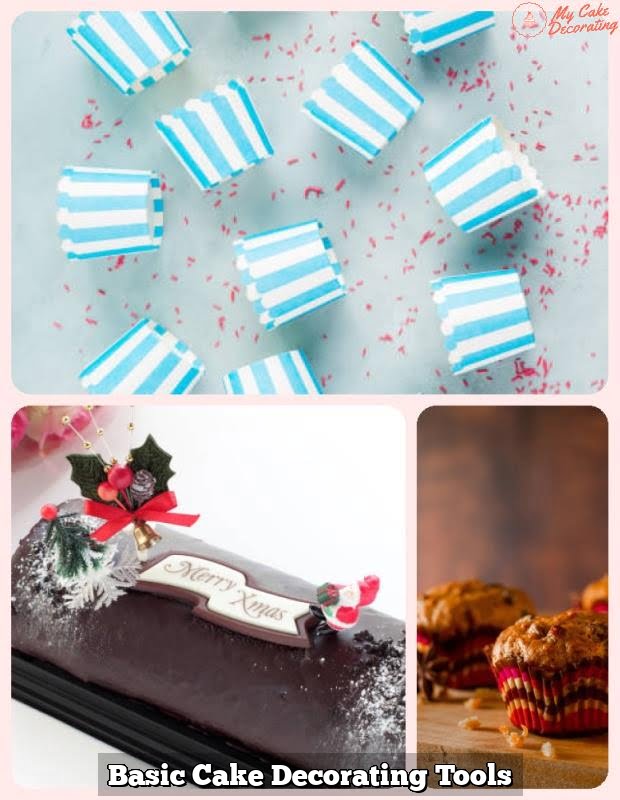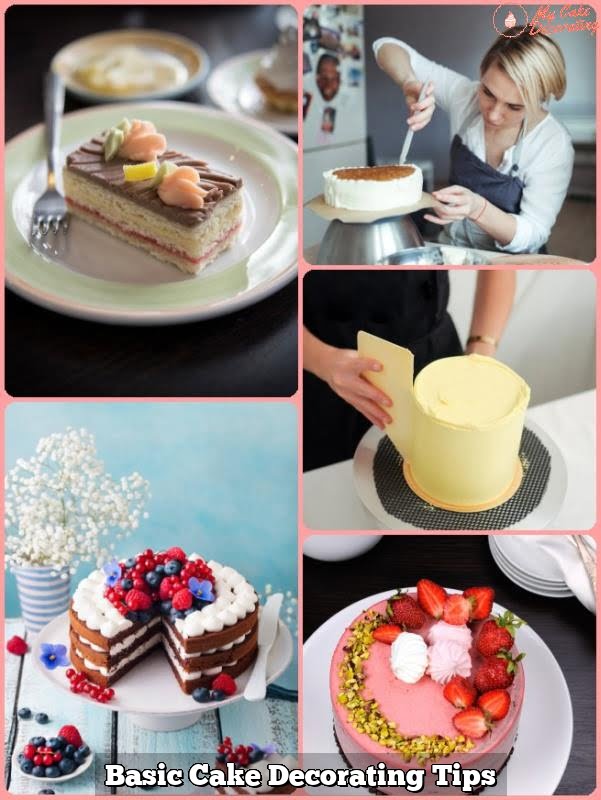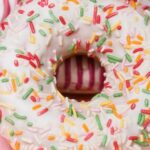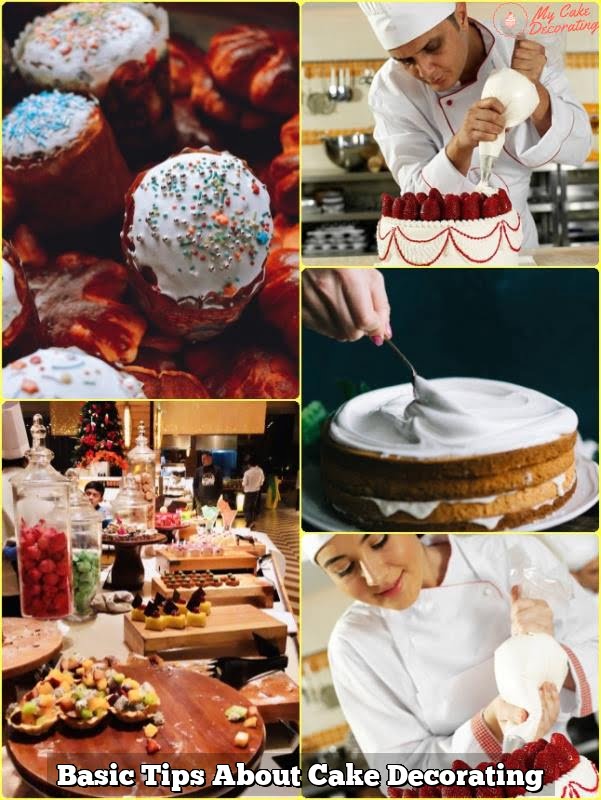Cake decorating is a skill that allows for creativity to flourish and transforms simple cakes into stunning works of art. Whether you’re a beginner or looking to enhance your decorating skills, mastering the basics is essential. In this article, we will explore the fundamentals of how to basic cake decorating, from selecting the right tools and supplies to creating simple yet elegant designs that will impress friends and family.
The art of cake decorating goes beyond just making a delicious treat; it adds a special touch to any occasion, be it birthdays, weddings, or holidays. A beautifully decorated cake can be the centerpiece of a celebration and leave a lasting impression on guests. Understanding the importance of cake decoration is key to elevating your baking skills and taking your creations to the next level.
By following this comprehensive guide on basic cake decorating techniques, you will learn how to use piping bags, spatulas, and other essential tools effectively. From selecting the right base cake and frosting to troubleshooting common mistakes, this article covers everything you need to know to start creating stunning cakes at home. Get ready to unleash your creative side and impress with your newfound skills in cake decorating.
Essential Tools and Supplies for Basic Cake Decorating
Cake decorating is not only a fun and creative activity but also an essential part of making a cake look appealing and appetizing. To get started with basic cake decorating, there are a few essential tools and supplies that you will need to have on hand. One of the most important tools is a turntable, which allows you to easily rotate the cake while decorating it. This helps to ensure even and smooth application of frosting.
In addition to a turntable, other essential tools for basic cake decorating include offset spatulas for spreading frosting, piping bags and tips for creating various designs, a bench scraper for smoothing out frosting, and a cake leveler for creating even cake layers. It’s also important to have a good quality mixing bowl, measuring cups and spoons, and an electric mixer for whipping up frosting.
When it comes to supplies, make sure to have a variety of food coloring gels to customize your frosting colors, edible decorations such as sprinkles or edible glitter, and different types of frostings like buttercream or fondant. Having these essential tools and supplies on hand will help you create beautifully decorated cakes that are sure to impress your friends and family.
| Essential Cake Decorating Tools | Supplies |
|---|---|
| Turntable | Food coloring gels |
| Offset spatulas | Edible decorations (sprinkles, glitter) |
| Piping bags and tips | Different types of frostings (buttercream, fondant) |
Choosing the Right Cake Base and Frosting
When it comes to basic cake decorating, selecting the right cake base and frosting is crucial to achieving a delicious and visually appealing final product. The type of cake you choose will depend on personal preference, the occasion, and the design you have in mind. Here are some popular options for cake bases:
- Vanilla: A classic choice that pairs well with a variety of frostings and fillings.
- Chocolate: Perfect for chocolate lovers and can be paired with chocolate or vanilla frosting.
- Red Velvet: A rich and moist cake that adds a pop of color to your dessert table.
In addition to the cake base, selecting the right frosting is equally important in basic cake decorating. Some common types of frosting include:
- Buttercream: A versatile and easy-to-work-with frosting that can be flavored and colored as desired.
- Cream Cheese Frosting: Ideal for carrot cakes and red velvet cakes, offering a tangy sweetness.
- Fondant: A smooth and pliable icing that provides a polished look to cakes but may not be as flavorful as buttercream or cream cheese frosting.
When choosing the right combination of cake base and frosting, consider the flavor profile you want to achieve, the level of difficulty in working with each type of frosting, and how well they will complement each other. Experimenting with different combinations will help you discover your favorite pairings for future cake decorating projects.
Basic Techniques for Cake Decorating
Basic cake decorating techniques such as piping, spreading, and layering are essential skills for anyone looking to create beautifully decorated cakes. Whether you are a beginner or an experienced baker, mastering these techniques will help you elevate the appearance of your baked creations. In this section, we will explore how to effectively use piping bags, spatulas, and other tools to create stunning designs on your cakes.
Piping Techniques
Piping is a classic cake decorating technique that involves using a piping bag filled with frosting to create intricate designs on the surface of the cake. To master piping, start by selecting the right tip for the design you want to achieve. Practice squeezing the frosting evenly and consistently to create smooth lines and shapes. Experiment with different tip styles and pressure levels to create various textures and patterns on your cake.
Spreading Skills
Spreading frosting evenly on a cake is another important technique in basic cake decorating. Use an offset spatula or a straight-edged knife to apply a thin layer of frosting on the top and sides of the cake. Begin by crumb-coating the cake with a thin layer of frosting to seal in any crumbs before adding a final layer for decoration. Smooth out any imperfections with long, even strokes, rotating the turntable as needed for even coverage.
Layering Decorations
Layering decorations on your cake can add depth and dimension to your design. Start by placing your base layer of frosting on the cake before adding additional accents such as flowers, rosettes, or beads. Experiment with different colors and textures to create visually appealing patterns that complement the overall theme of your cake. Remember to work quickly but carefully when layering decorations to prevent smudging or smearing the design.
By mastering these basic techniques for cake decorating – piping, spreading, and layering – you can unlock endless possibilities for creating beautiful and professional-looking cakes at home. Practice regularly, experiment with different tools and materials, and don’t be afraid to get creative with your designs. With time and patience, you’ll be able to impress friends and family with your newfound skills in basic cake decorating.
Tips for Creating Simple and Elegant Designs
Creating simple and elegant designs for your cakes is a great way to impress your guests without having to spend hours on intricate details. Here are some tips to help you achieve beautiful results with minimal effort.
Less Is More
When it comes to cake decorating, sometimes simplicity is key. Don’t feel like you need to cover every inch of the cake with decorations. Sometimes a clean, minimalist design can be just as striking as a heavily adorned one.
Color Coordination
Choosing a color scheme that complements each other can elevate the overall look of your cake. Whether you opt for pastel shades for a soft and delicate appearance or vibrant colors for a more eye-catching design, make sure that the colors work well together.
Use Different Textures
Mixing different textures can add visual interest to your cake without adding extra complexity. Consider incorporating smooth frosting with crunchy decorations like sprinkles or edible pearls for contrast.
By following these tips, you can create simple yet elegant designs that will surely impress your friends and family. Remember, practice makes perfect, so don’t be afraid to experiment and try out new techniques when it comes to basic cake decorating.
Adding Flair With Edible Decorations and Garnishes
When it comes to basic cake decorating, adding flair with edible decorations and garnishes can take your creations to the next level. Whether you’re looking to enhance the visual appeal or add a touch of flavor, choosing the right decorations can elevate your cake design. Here are some ideas on how to incorporate edible decorations and garnishes effectively:
- Fresh Fruit: Fresh fruit is not only visually appealing but also adds a pop of color and natural sweetness to your cake. Consider using berries, sliced kiwi, mango, or citrus fruits as decorative elements.
- Chocolate Shavings: Chocolate shavings are a simple yet elegant way to decorate cakes. You can use a vegetable peeler to create delicate curls or rough grated chocolate for a more rustic look.
- Nuts and Seeds: Toasted nuts and seeds add crunch and texture to your cake while providing an extra layer of flavor. Consider using chopped pistachios, slivered almonds, or sesame seeds for added interest.
Incorporating edible decorations not only enhances the overall appearance of your cake but also adds depth and complexity to its flavor profile. Experiment with different combinations of fruit, chocolate, nuts, and other edible elements to create stunning designs that will impress your guests.
Remember to consider the flavor profile of your cake when selecting edible decorations and garnishes. Ensure that the flavors complement each other harmoniously to create a well-balanced and delicious dessert. With a bit of creativity and practice, you’ll be able to master the art of incorporating edible decorations into your basic cake decorating repertoire effortlessly.
Troubleshooting Common Cake Decorating Mistakes
Even the most experienced cake decorators may encounter some challenges along the way. Understanding common mistakes and knowing how to fix them can help you achieve the perfect cake decoration. One of the most common issues is air bubbles in your frosting when piping. To avoid this, make sure to gently tap your piping bag on the counter before starting to pipe, which helps release any air bubbles trapped inside.
Another common mistake that beginners often face is uneven frosting on their cakes. To prevent this, try using an offset spatula for smooth and even application of frosting. If you notice any uneven spots, you can always go back and touch them up with additional frosting. Remember, practice makes perfect when it comes to achieving a flawless finish on your cakes.
Additionally, frosting consistency plays a crucial role in cake decorating. If your frosting is too thick, it can be challenging to work with and may result in a messy design. On the other hand, if your frosting is too runny, it will not hold its shape when piped onto the cake. To achieve the right consistency, add small amounts of liquid or powdered sugar until you reach the desired thickness for easy piping and spreading.
| Common Mistake | How to Fix It |
|---|---|
| Air bubbles in frosting | Gently tap piping bag before piping |
| Uneven frosting application | Use an offset spatula for smooth application |
| Inconsistent frosting consistency | Add liquid or powdered sugar to adjust thickness |
Final Touches
When it comes to basic cake decorating, the final touches play a crucial role in enhancing the overall presentation of your creation. The way you present and display your decorated cake can make it even more visually appealing and enticing to your guests or customers. Whether you are baking a cake for a special occasion or just for fun, the way you present it can truly elevate the experience.
One key aspect of presenting a decorated cake is choosing the right serving platter or stand. A beautifully designed cake stand can complement the decorations on your cake and make it stand out even more. Consider the theme of your event or the design of your cake when selecting a stand to ensure that everything ties together seamlessly.
In addition to choosing the right serving vessel, consider adding some final touches to really make your decorated cake pop. This could include adding fresh flowers, edible glitter, sprinkles, or other decorative elements that add an extra layer of visual interest.
Remember, while these decorations can enhance your cake’s appearance, be sure not to overwhelm the design with too many elements – less is often more when it comes to decorating a cake. By paying attention to these final details, you can take your basic cake decorating skills to the next level and create show-stopping creations that will impress everyone who sees them.
Conclusion
In conclusion, mastering the art of basic cake decorating is all about embracing creativity and practice. While it may seem intimidating at first, with the right tools, techniques, and tips, anyone can create beautifully decorated cakes that will impress friends and family. Remember that practice makes perfect, so don’t be discouraged by initial mistakes or mishaps.
By following the essential steps outlined in this guide, including selecting the right tools and supplies, choosing the perfect cake base and frosting, and learning basic decorating techniques like piping and spreading, you can build a solid foundation for your cake decorating skills. Experiment with different designs and decorations to find what works best for you and don’t be afraid to think outside the box.
In the world of cake decorating, there are endless possibilities for creativity. Whether you are a beginner or have some experience in decorating cakes, continue to push yourself to try new techniques, flavors, and designs. With dedication and a willingness to learn from both successes and failures, you will soon become a pro at basic cake decorating. Remember to have fun with it and enjoy the process of creating delicious works of edible art.
Frequently Asked Questions
How to Decorate Cake in Home Simple?
Decorating a cake at home can be simple with a few key techniques. Start by ensuring your cake is completely cooled before decorating.
Use a spatula to apply a crumb coat of frosting, then chill the cake to set it. Once the crumb coat is set, apply a final layer of frosting and use various tools like piping bags, spatulas, and fondant to add decorations.
What Are the 7 Different Cake Decorating Techniques?
There are seven different cake decorating techniques that can take your cakes to the next level. These include buttercream flowers, fondant accents, rosettes, piping borders, textured finishes like ruffles or basketweave, edible embellishments like sprinkles or pearls, and airbrushing for a professional finish. Each technique requires practice and patience to master.
How to Do Basic Piping on a Cake?
Basic piping on a cake is an essential skill for any baker looking to decorate their creations. Start by choosing the right tip for your desired design – round tips for writing or outlines, star tips for borders or rosettes, and petal tips for flower petals. Fill a piping bag with frosting and hold it at a 45-degree angle to the cake surface.
Apply consistent pressure while piping to create smooth lines or intricate designs on your cake. Practice makes perfect when it comes to mastering basic piping techniques.

Welcome to my blog about home and family. This blog is a place where I will share my thoughts, ideas, and experiences related to these important topics. I am a stay-at-home mom with two young children. I hope you enjoy reading it! and may find some helpful tips and ideas that will make your home and family life even better!





